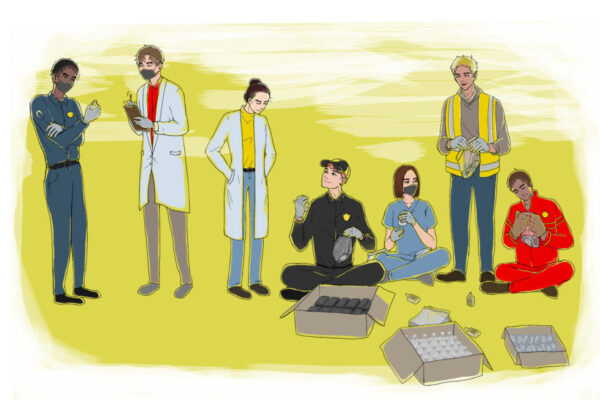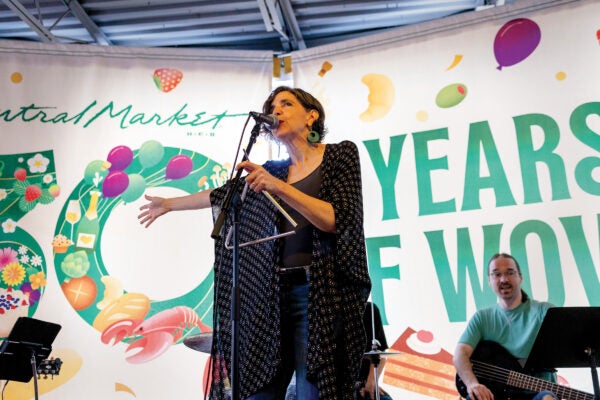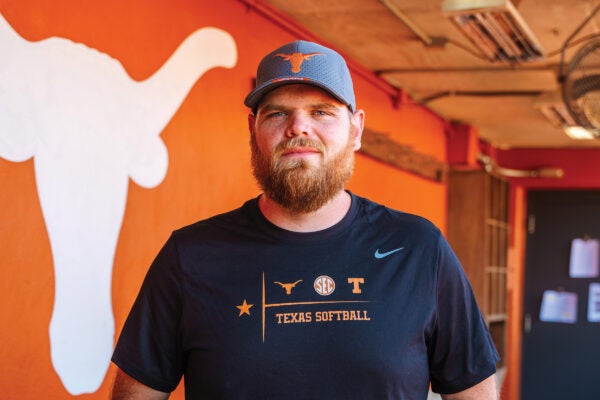Most emergencies that affect campus are “quick and gone,” Jonathan Robb says. But the COVID-19 emergency — and how campus must respond to it — seems to constantly change.
“Even with something like a hurricane, once it’s here, you respond,” Robb, director of emergency preparedness in the Office of Campus Safety, says. “Right after that, you jump into recovery, and then you can go from there. But this one is just dragging on and on, and you don’t really know when the end will be. So, you have to constantly reevaluate what you’re doing, continue to respond and move on from there.”
The Office of Campus Safety at The University of Texas at Austin is responsible for emergency preparedness, lab and building safety and fire prevention efforts. In an emergency, the office determines the first response steps and identifies the right responders to each situation, whether it be a water crisis, threat of violence or building fire. The office also collaborates with many on- and off-campus groups, such as the UT Police Department, Utilities and Energy Management and Texas Athletics, to plan for major events and be ready to respond to the unexpected.
During a normal spring semester, the office would be focused on preparing for commencement and graduations as well as the next season of home football games. The Emergency Operations Center (EOC) on campus is the office’s meeting place for team members who are trained to respond to any emergency and can help solve issues that arise during such large planned events. During a football game, for example, 26 groups are represented in the EOC, ready to respond to any complications, such as public safety threats or fainting crowd members.
When campus closed in March because of COVID-19 stay-at-home orders, the office’s focus shifted to the safety of workers remaining on campus, social distancing efforts and the upkeep of empty buildings, all with an eye on evolving guidelines.
“This is an ever-moving target,” says Jimmy Johnson, assistant vice president of the Office of Campus Safety. “Things change daily on a national, international level, at a state level, and certainly as our county and regional approaches try to coordinate between all those levels, and then what we try to do as a university community.”
A global risk department began monitoring the coronavirus in the beginning of January before any cases had been confirmed in the U.S. By the end of the month, conference calls and meetings were underway to make plans for university members abroad and for campus if the virus reached the country, Texas and eventually Austin.
Johnson says that by the first official campuswide COVID-19 meeting on Feb. 27, the university’s main concern was how the virus would affect students and employees abroad. On March 12, all university-sponsored traveling students, faculty members and staff members were instructed to return home immediately. The next day, classes were canceled ahead of spring break, and most university members could not return to campus after the first COVID-19 case was confirmed within the university community.
THIS IS AN EVER-MOVING TARGET. THINGS CHANGE DAILY ON A NATIONAL, INTERNATIONAL LEVEL, AT A STATE LEVEL.
Once campus closed and classes moved online, the office began creating a plan for how to protect facilities and those who were still working there.
The Office of Campus Safety held virtual EOC meetings every day for almost two months to work with members from groups all over campus to find personal protective equipment for workers, shut down lab operations, ensure building maintenance and constantly update the safety plan for campus.
“The nice thing about the Emergency Operations Center is that by having a collaboration of people in there, we can get these requirements and tasks out to the appropriate groups and experts to complete them,” Robb says.
The EOC team used a variety of methods to provide PPE for those on campus, including University Health Services staff members and Dell Medical School front-line workers. Stocks of protective equipment were identified that were not being used by other departments, then resources were purchased from many places in smaller quantities to avoid “putting all their eggs in one basket,” Johnson says.
“When this is happening all across the world, it’s hard to get those resources, and you have an extended amount of time before they come in,” Robb says. “So, using the resources on campus really helped bridge that gap.”
Local community members also pitched in to provide supplies. Tito’s Handmade Vodka and Rebecca Creek Distillery donated almost 100 gallons of hand sanitizer.
Aside from the medical professionals on campus, mail delivery workers, toxic waste disposers and police officers, among others, also needed supplies. The office secured single-use masks, and then washable cloth masks were delivered for front-line personnel.
“The availability has been a challenge, and it shows how we’ve been able to work,” Johnson says. “There’s been people that have come up with contacts or good ideas, and said, ‘Hey, I’ve got a friend who makes tennis shoes in California. Now he’s making masks, and they’ll take care of us,’ things like that. It really helped us to look through a variety of channels that normally we wouldn’t.”
Ensuring that the correct safety procedures are followed in the 1,600 labs on campus is one of the main priorities for the office’s Environmental Health and Safety division during the usual school year, but during this emergency, its lab safety team was tasked with closing labs as quickly as possible.
“We started modifying our research component on campus, but that didn’t happen overnight,” Johnson says. “That has been very structured and strategic. Some were able to shut off immediately. Some took days or a week to get into that mode because they had certain aspects of the research that were ongoing.”
Environmental Health and Safety worked closely with the Office of the Vice President of Research on safety procedures for labs that were closed immediately or temporarily remained operational. Shutting down labs meant that much hazardous waste was produced that had to be safely collected and disposed.
Unoccupied buildings on campus are being maintained by Utilities and Energy Management and Facilities Services to ensure that the buildings and systems are fully functioning when people return to campus. A flush water system was created by Utilities’ mechanical distribution team to keep water purity at safe drinking levels. Energy use was also modified to ensure that the way buildings cool and heat is efficient, something that is usually done for winter break but now is in place for a much longer time.
As the spring semester drew to a close, Robb was among the many people on campus working to help create a staged reopening plan for how the university community will return.
“It’s not going to be a flip of the switch,” Robb says. “Some of the buildings have been empty for X amount of time, so we have to do things to make sure those buildings are ready and those buildings are safe to have occupants back. Just allowing that timeframe to get people back in a slow and steady manner so that we don’t increase the chance of getting that curve back up.”
Johnson says the Office of Campus Safety will use its experience responding to COVID-19 to better respond to future emergencies. The adaptability of university members to an online semester, he says, has been the positive of this whole situation.
“We’ve evolved as a species,” Johnson says. “And I think that we will take these lessons learned and incorporate things very promptly into the next crisis that faces us. We’re only as great as our foundation, and I think that we tried over the past 15 years as a university community to put a structure in place to help us during these types of emergencies.”
Robb and Johnson both attribute the success of executing the safety plan to the collaboration of the many groups that made up their EOC team and support from outgoing President Gregory L. Fenves and executive leadership during their COVID-19 emergency response efforts.
“We’ve had a tremendous amount of input from every corner of our campus,” Johnson says. “I think that’s really brought some ownership into this from the university level that we haven’t really seen in the past. It’s remarkable. The brilliant minds that you can get together that will problem-solve or do things that are out of the norm, I think is a true testament to that catchphrase, ‘What starts here changes the world.’”



